The pattern that became one of the most sought after British Coins
King George III was the ruler of Great Britain and Ireland from 1760 until his death in 1820. His reign was one of conflict, with wars arising across the world with the continual expansion of the British Empire. Early in King George III’s reign he won the Seven Years’ War against France in 1763, making Britain the dominant power in North America and India.
This by no means led to peace across the British Empire, with colonies across the new world becoming unhappy with the large amounts of tax they had to pay whilst having no seats or power in Parliament. By 1775 the War for American Independence had broken out and with the help of France, they had taken their independence by 1783.

With the French Revolution overthrowing the French monarchy there was rising tension in Britain that the French, under the leadership of Napoleon Bonaparte, would try to invade. There was a swell in the number of volunteers to the army with 27,000 being reviewed in Hyde Park. King George III was said to have told Bishop Hurd that he would lead his troops from the front against Bonaparte.
King George III was plagued with mental illness throughout his later life and in 1810 a regency was created where his
son Prince George IV would rule in his place. Napoleon’s armies were defeated at the battle of Waterloo and he surrendered a few days after the battle. Britain and King George III had earned a decisive victory.
This gorgeous 1820 King George III Five Pound coin symbolised King George III defeating evil (Napoleon Bonaparte), with the design of St George slaying the dragon. Only 25 were struck, and it never reached general circulation for a number of reasons. One being the death of King George III in 1820 and also the lack of a need for larger denomination coins with the invention of paper money.
Other examples from this reign…
-
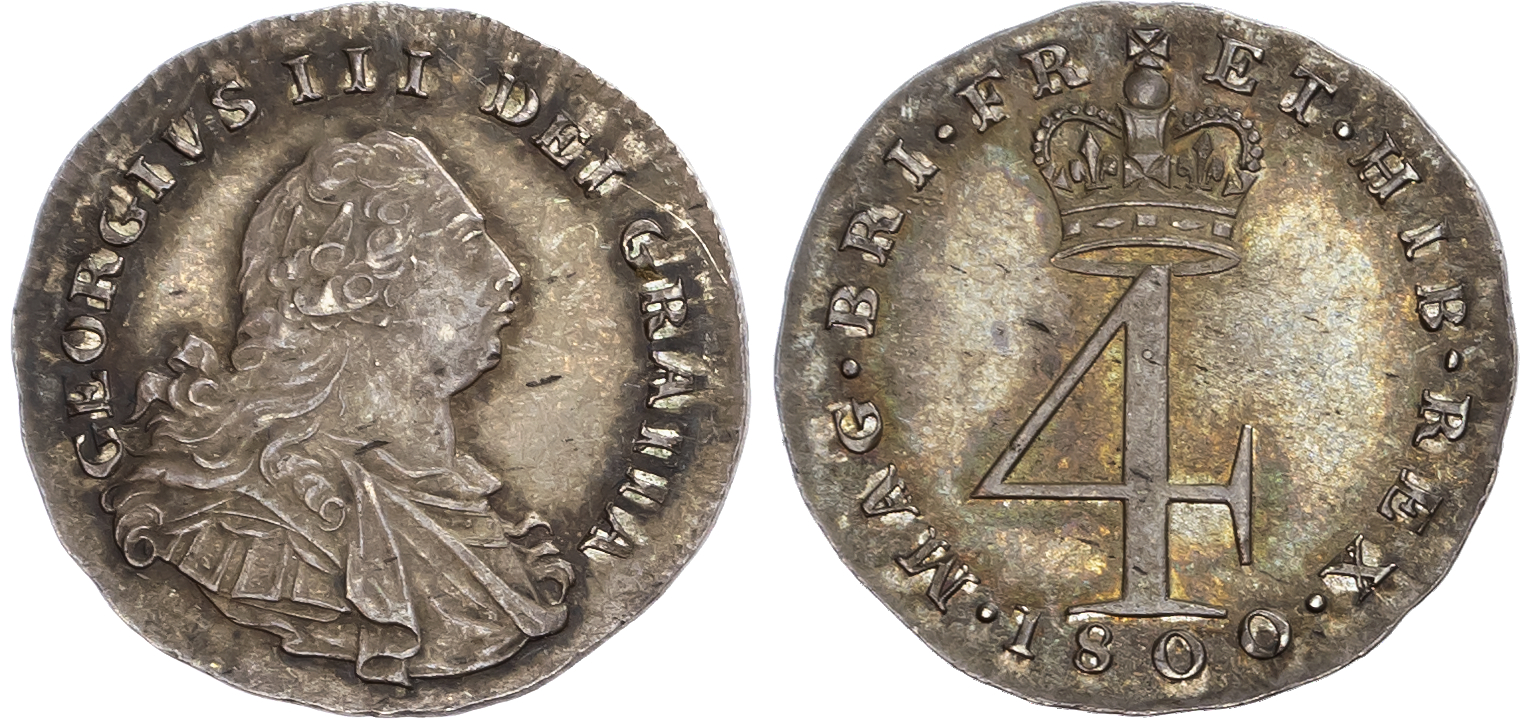 George III (1760-1820) Maundy Set, 1800, Fourpence, Threepence, Twopence, Penny
George III (1760-1820) Maundy Set, 1800, Fourpence, Threepence, Twopence, Penny -
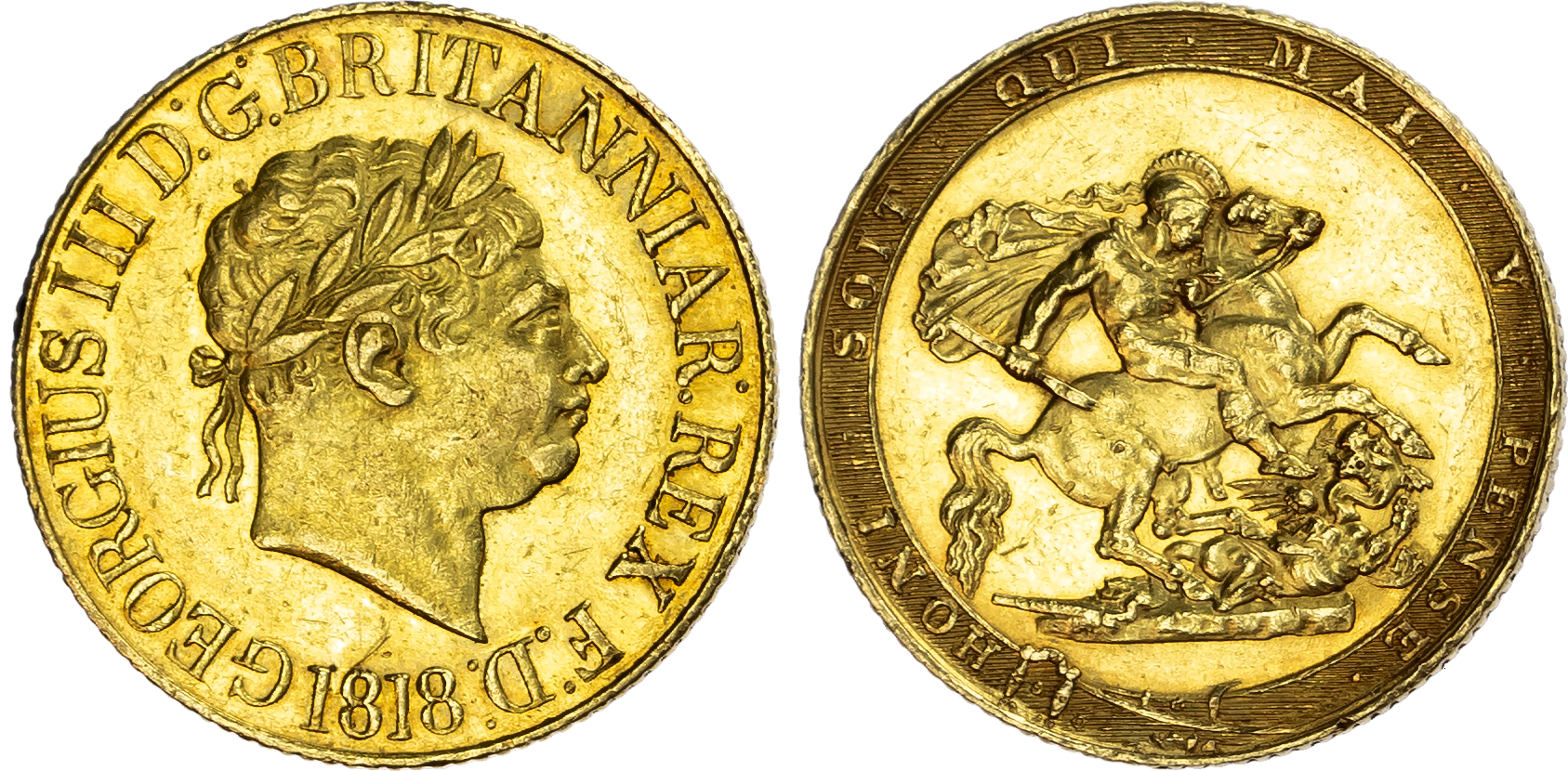 George III (1760-1820), Sovereign, 1818
George III (1760-1820), Sovereign, 1818 -
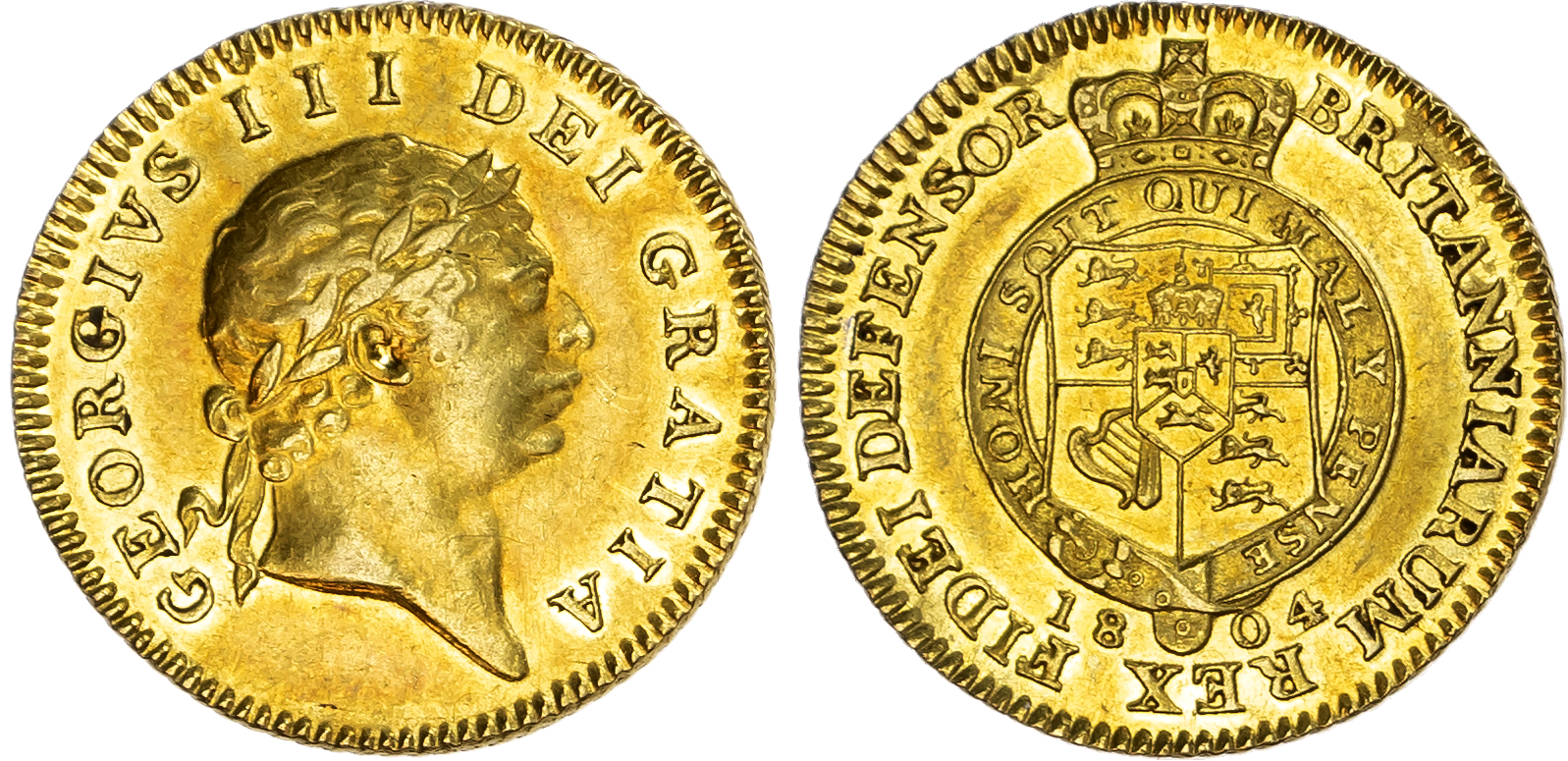 George III (1760-1820), Half-Guinea, 1804
George III (1760-1820), Half-Guinea, 1804 -
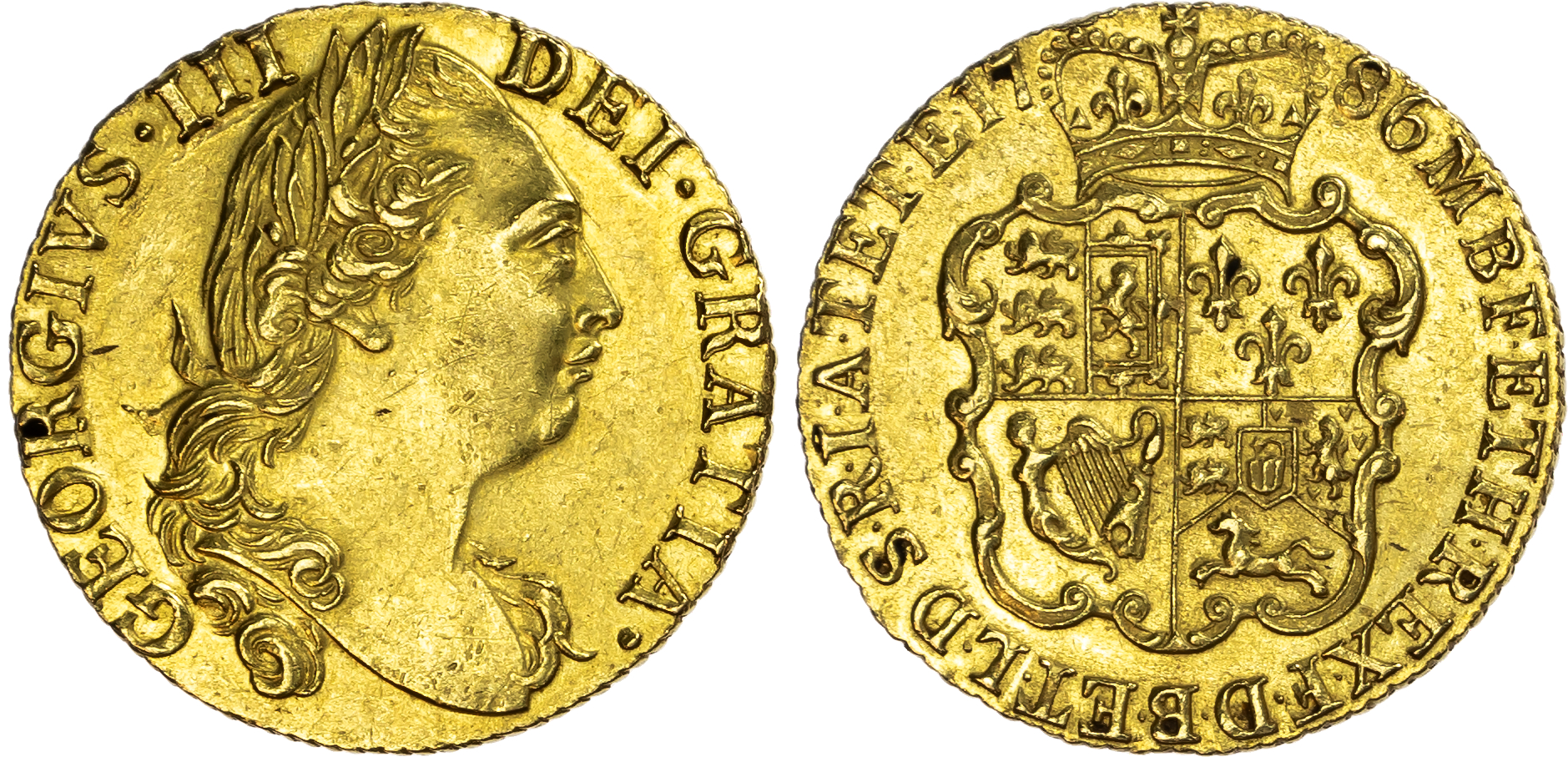 George III (1760-1820) Guinea 1786
George III (1760-1820) Guinea 1786 -
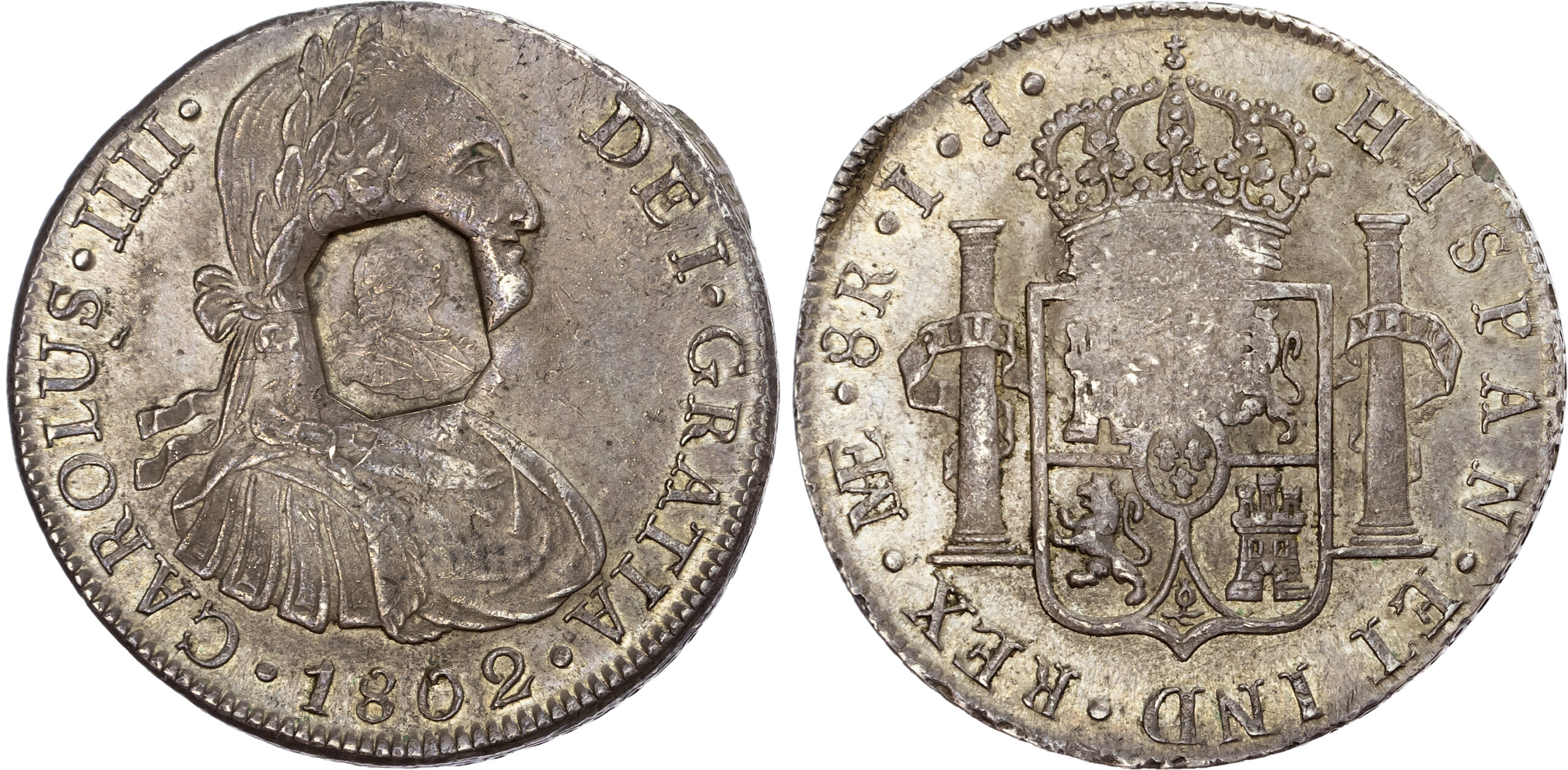 George III (1760-1820), Emergency Issue, Octagonal Countermark Dollar on 8 Reales of Charles IV, 1802
George III (1760-1820), Emergency Issue, Octagonal Countermark Dollar on 8 Reales of Charles IV, 1802 -
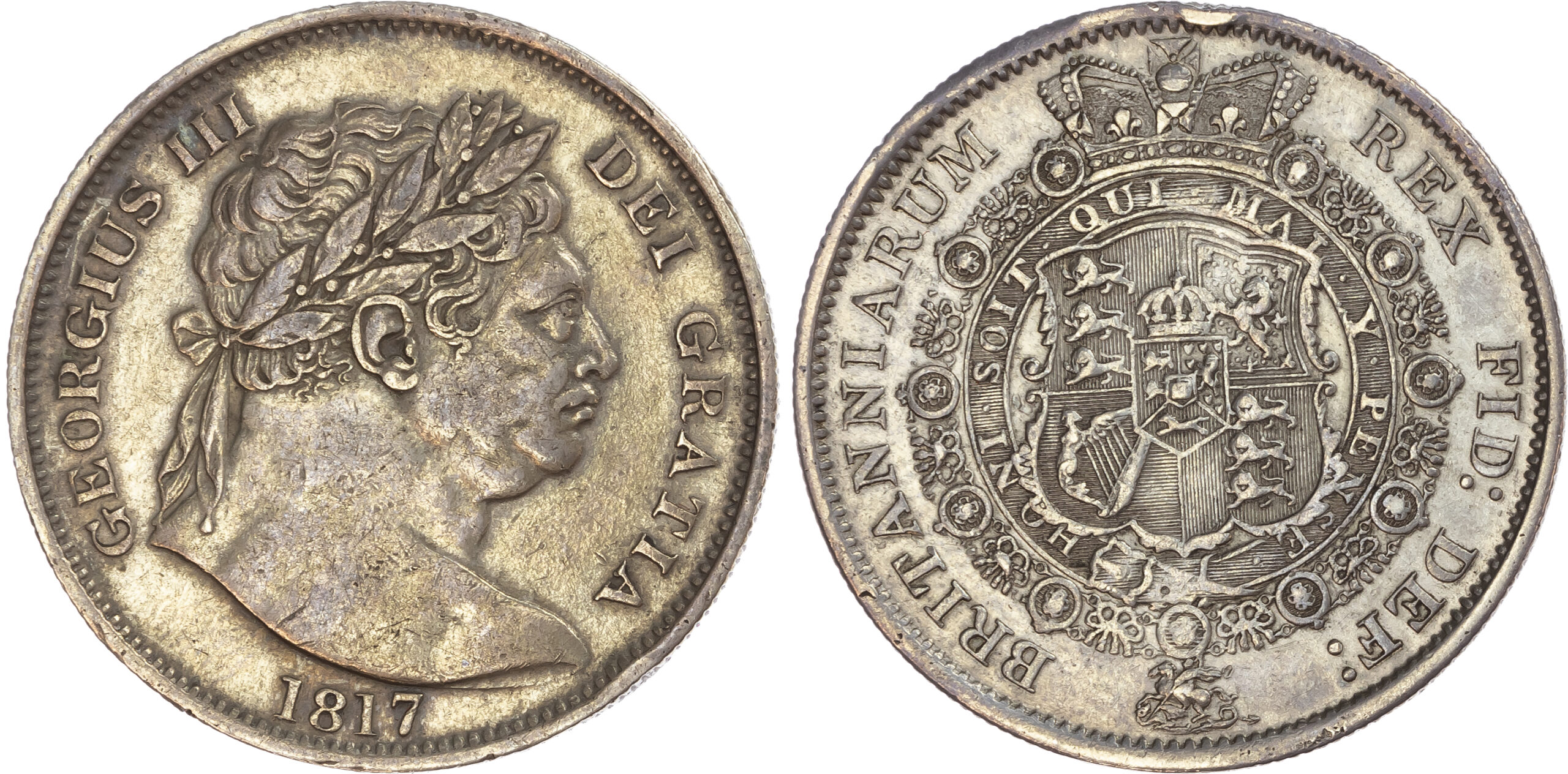 George III, Halfcrown 1817
George III, Halfcrown 1817 -
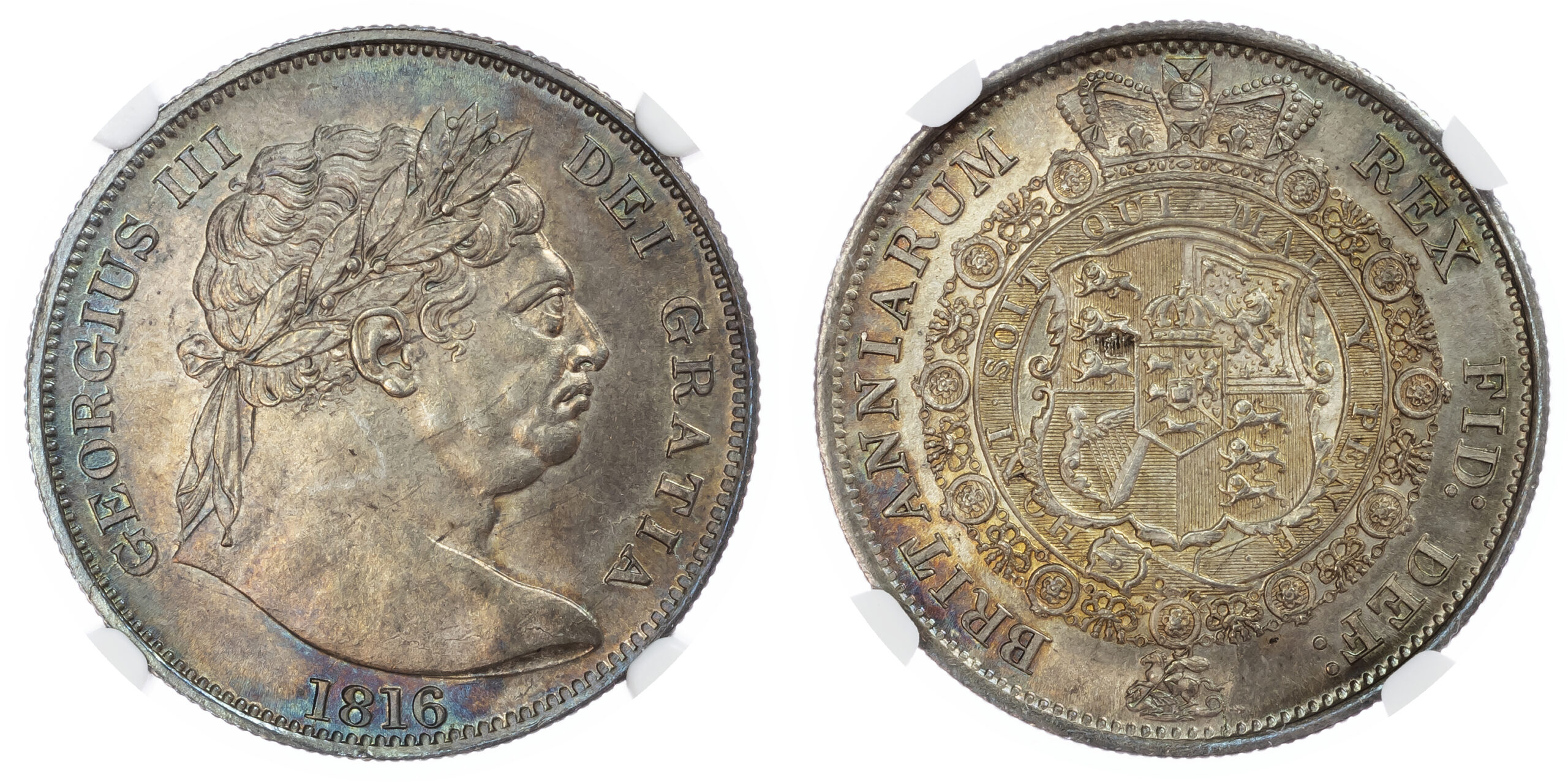 George III, ‘Bullhead’ Halfcrown, 1816
George III, ‘Bullhead’ Halfcrown, 1816 -
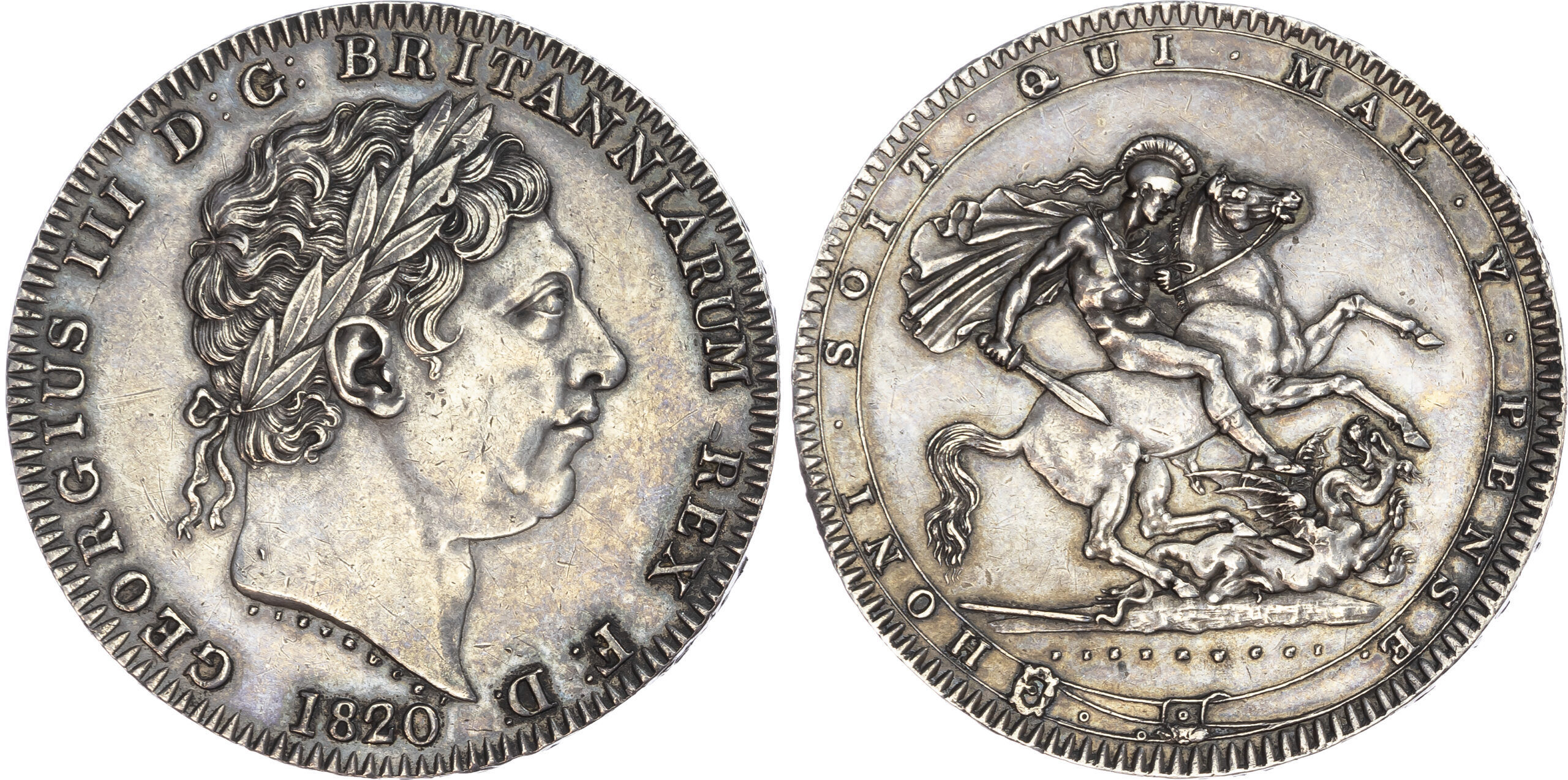 George III (1760-1820), Crown, 1820 LX
George III (1760-1820), Crown, 1820 LX -
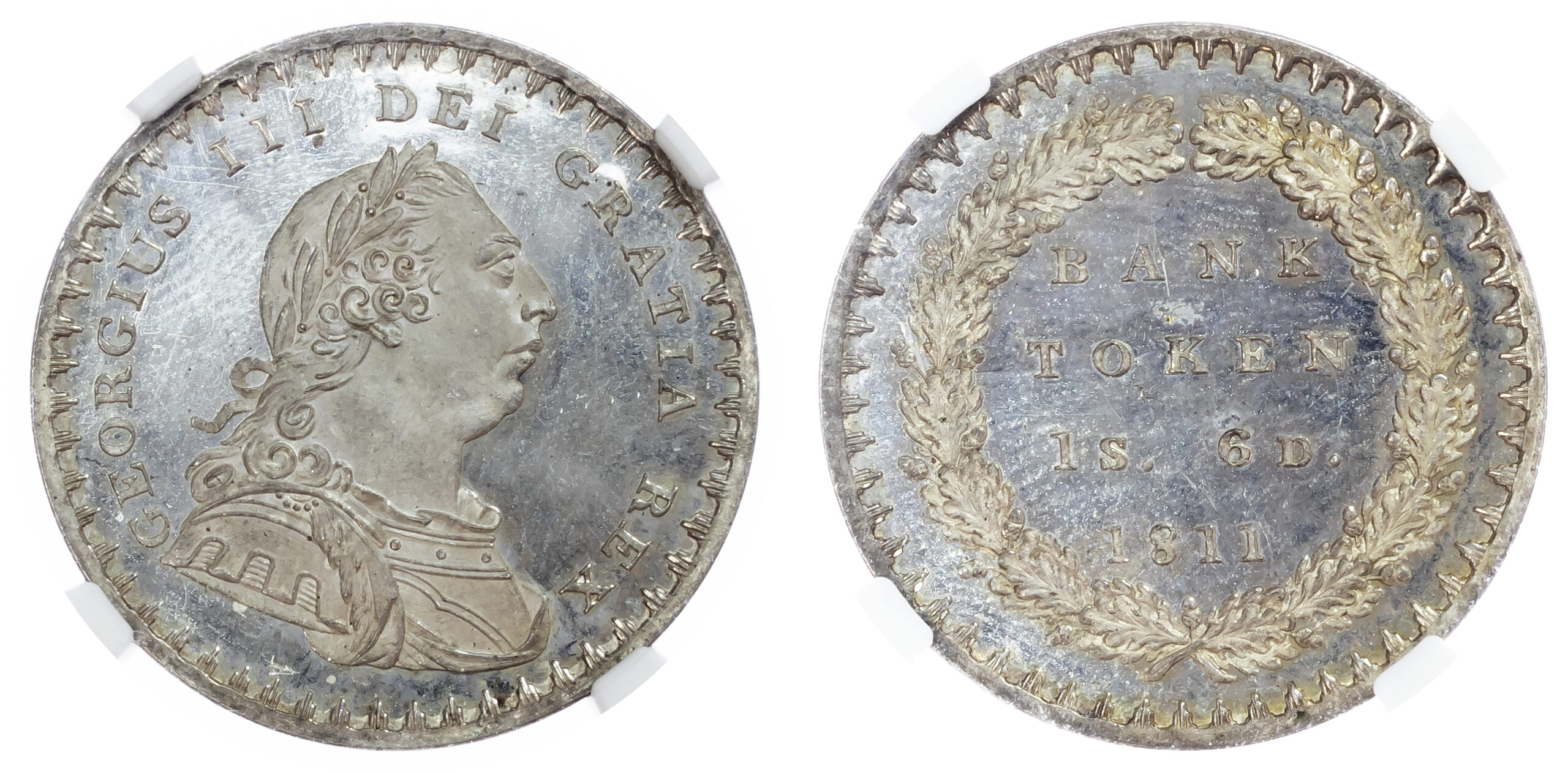 George III, Proof BOE Token, Eighteen Pence, 1811 – NGC PF66 Cameo
George III, Proof BOE Token, Eighteen Pence, 1811 – NGC PF66 Cameo -
 George III (1760-1820) Guinea 1797, Spade Type
George III (1760-1820) Guinea 1797, Spade Type -
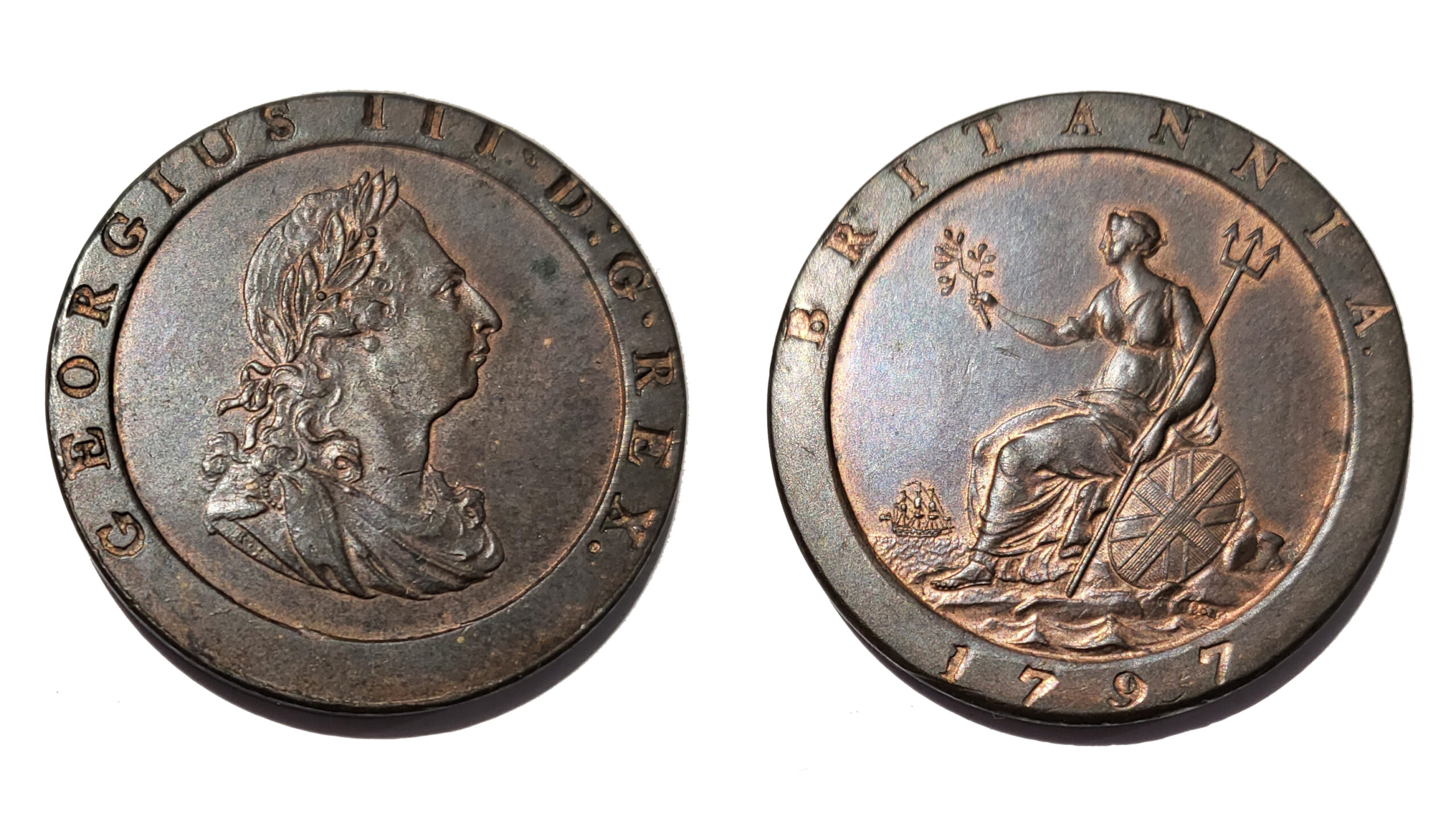 George III Cartwheel Penny 1797
George III Cartwheel Penny 1797 -
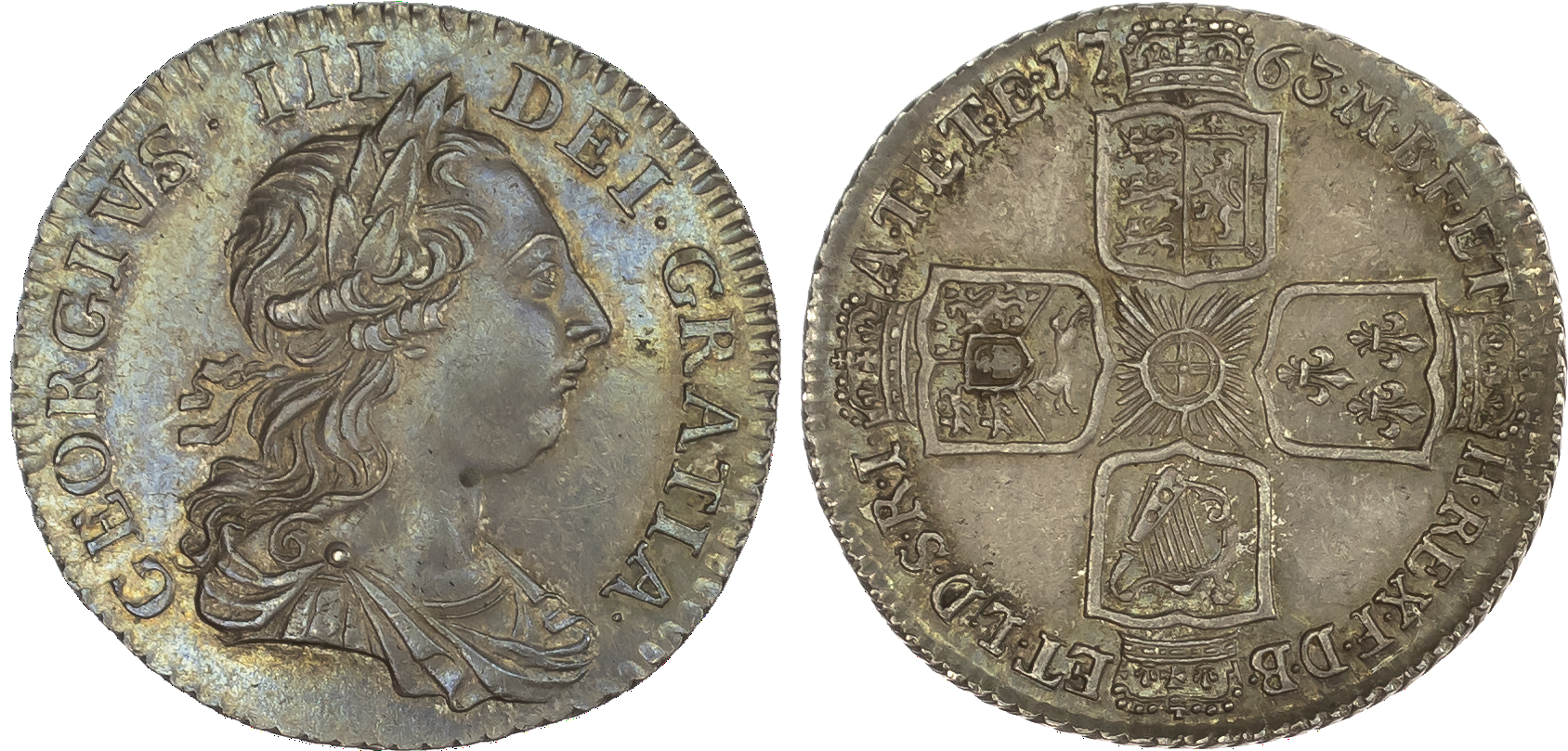 1763 George III Northumberland Shilling
1763 George III Northumberland Shilling
